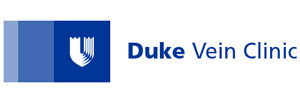It is estimated that at least a third of all women (and a smaller percentage of men) are believed to have spider veins, a type of venous disease that causes very thin, web-like veins near the surface of the skin. Spider veins are the mildest form of venous insufficiency, and are similar to varicose veins, only smaller. They are most often seen on the legs, arms, face, head and chest.
is estimated that at least a third of all women (and a smaller percentage of men) are believed to have spider veins, a type of venous disease that causes very thin, web-like veins near the surface of the skin. Spider veins are the mildest form of venous insufficiency, and are similar to varicose veins, only smaller. They are most often seen on the legs, arms, face, head and chest.
Spider veins appear as small, often tangled groups of blood vessels that are usually red or blue in color. Like varicose veins, spider veins are caused by the accumulation of blood, but unlike varicose veins they usually do not involve pain or other physical symptoms.
They can be diagnosed merely by sight, and typically take on one of several patterns:
- “Sunburst” or spider-web pattern that radiates outward from a specific point
- “Tree-branch” pattern
- “Matting” or linear pattern that may be nothing more than a set of thin lines
Risk factors for spider veins are similar to varicose veins: age, pregnancy, hormonal changes, heredity, obesity, extended periods of standing, trauma, and sun damage. Spider vein treatments are most often non-invasive or minimally invasive and include various sclerotherapy and laser procedures. Spider vein treatment is considered a cosmetic procedure due to the low likelihood of physical pain or other problems associated with them.
Click here for additional information on minimally-invasive procedures for spider veins offered by the Duke Vein Clinic.
If you live in the Raleigh-Durham or greater Research Triangle area and are experiencing unsightly spider veins, please call or come in for a visit to our Duke Vein Clinic. We will help you to decide what procedure may be right for you.

